
Identification of novel growth regulators in plant populations expressing random peptides
Blog, Plant Science Research Weekly, Research, Research Blog0 Comments
/
Knowing that many small molecules act as growth regulators, chemical genomics endeavors to identify novel growth-regulating compounds through screening thousands of randomly generated molecules. Knowing that many peptides also act as growth regulators, Bao et al. used a similar approach to look for novel…
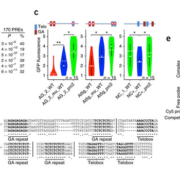
Cis and trans determinants of epigenetic silencing by Polycomb repressive complex 2 ($)
Blog, Plant Science Research Weekly, Research, Research BlogPolycomb repressive complex 2 (PRC2) stably regulates gene expression by initiating repressive histone methylation (specifically, trimethylation of histone H3 at Lys27, H3K27me3). Xiao et al. investigated how PRC2 targets the genes it silences. They identified several Polycomb response elements (PREs)…
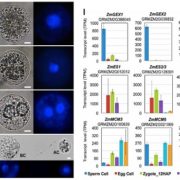
Zygotic genome activation occurs shortly after fertilization in maize
Blog, Plant Science Research Weekly, Research, Research BlogA plant’s life begins with the fusion of haploid egg and sperm cells to produce a diploid zygote. Many of the processes that control early development are under the control of the maternal genome, but at some point there is a shift towards zygotic control. Chen et al. investigated when this shift occurs…
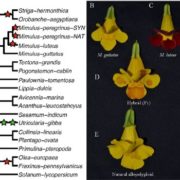
Emergence of subgenome dominance across time and ploidy
Blog, Plant Science Research Weekly, Research, Research BlogMany plants are not simple diploids (two copies of each chromosome) but are instead are the result of various forms of polyploidization (for example, whole-genome duplication or interspecific hybridization). Polyploidization can disrupt well-established controls over gene expression levels, transposon…
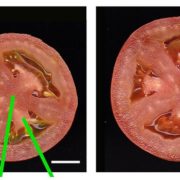
Tomato fruit weight controlled by Cell Size Regulator
Blog, Plant Science Research Weekly, Research, Research BlogMu et al. mapped a QTL previously shown to control fruit weight in tomato, and named the responsible gene Cell Size Regulator (CSR). They found that CSR-D, the derived allele, increases cell size and is widespread in Solanum lycopersicum var. lycopersicum, but not in ancestral tomatoes with smaller fruit.…
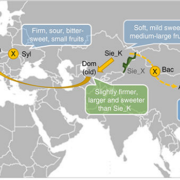
Genome re-sequencing reveals the history of apple and supports a two-stage model for fruit enlargement
Blog, Plant Science Research Weekly, Research, Research BlogCultivated apples (Malus domestica) trace their roots to Kazakhstan 4000 – 10,000 years ago, and since then have been propagated, transported, hybridized to other Malus species, and domesticated. Duan et al. sequenced more than 100 diverse accessions to trace apple's history and identify loci subjected…
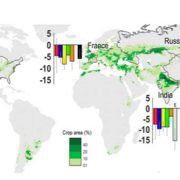
Temperature increase reduces global yields of major crops in four independent estimates ($)
Blog, Plant Science Research Weekly, Research, Research BlogAlthough future negative impacts on crop yields expected from rising temperature are well known to plant scientists, there are still some members of the broader public that need to be made aware of this problem. Zhao et al. combined four different methods of assessing the impact of increasing temperatures…
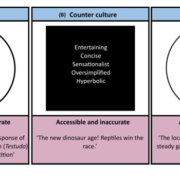
Publishing with objective charisma: Breaking science’s paradox ($)
Blog, Plant Science Research Weekly, Research, Research BlogDoublday and Connell ask whether scientific writing has to be so dull, and conclude that there is room for improvement. They are quick to argue that sensationalism and inaccuracy are not acceptable, but that it is possible for scientific writing to be both objective and charismatic. However, for the…
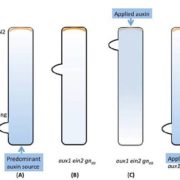
What We're Reading: August 25th
Blog, Research, Research BlogReview: Auxin signaling
Leyser summarizes our current understanding of the what, how and why of what auxin does (and doesn’t) do. For example, she points out that, “Auxin does not instruct cells to do anything in particular, but rather it influences the behavior of cells according to their…

